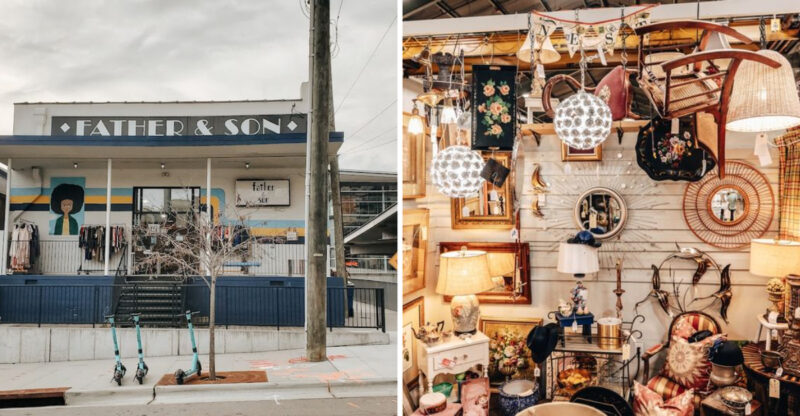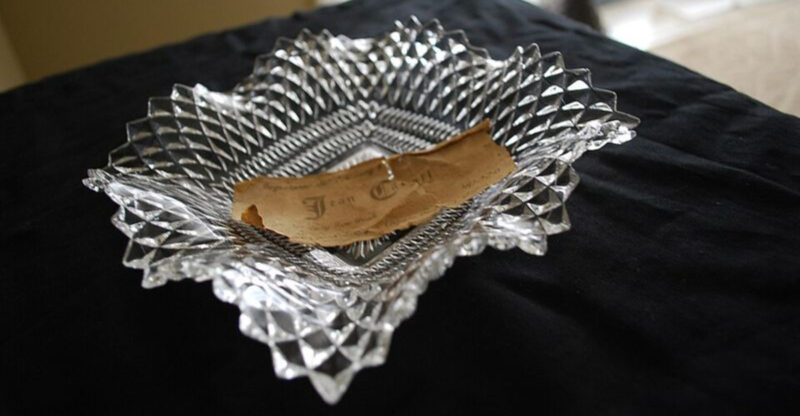15 Classic Kitchen Tools From Grandma’s Day We Need Back

Ever notice how Grandma’s kitchen always felt like the heart of the home? The clinking of sturdy tools, the smell of something bubbling on the stove, and the sight of gadgets built to last, it all had a certain magic.
Today’s sleek appliances might be convenient, but many of those old-school tools carried a charm and practicality that’s hard to match. By looking back, we can find inspiration for creating kitchens that feel both functional and timeless.
This article highlights nostalgic kitchen tools and is for informational purposes only!
1. Cast Iron Skillet
Nothing beats the satisfying weight of a well-seasoned cast-iron skillet in your hands. These kitchen workhorses develop a natural non-stick surface that improves with age, unlike those chemical-coated pans that scratch and wear out.
Cast iron skillets distribute heat evenly and transition seamlessly from stovetop to oven. They’re practically indestructible, too! With proper care, these pans become family heirlooms, carrying flavors and memories across generations.
2. Hand-Crank Egg Beater
Who needs electricity when you’ve got good old-fashioned elbow grease? Hand-crank egg beaters let you control the exact speed and intensity of your mixing with satisfying mechanical precision.
The gentle whirring sound and rhythmic turning motion connect you physically to your cooking process. Unlike electric mixers that splatter everything within a three-foot radius, these manual beaters keep your ingredients where they belong, in the bowl! Plus, they work perfectly during power outages.
3. Butter Churn
Have you tasted homemade butter? It’s a revelation of flavor that puts store-bought versions to shame. The humble butter churn transforms ordinary cream into golden, creamy delight through simple motion and time.
Churning butter connects us to food preparation basics that our ancestors understood intimately. The rhythmic process becomes almost meditative. Modern countertop versions make this traditional process accessible without requiring a farmhouse or dairy cow in your backyard.
4. Potato Masher
Electric food processors might be quick, but they turn potatoes into a gluey paste. The humble hand-powered potato masher creates perfectly textured mashed potatoes with minimal effort.
Those distinctive zigzag or grid patterns at the business end work through potatoes efficiently while leaving just enough chunks for character. Potato mashers double as versatile tools for crushing avocados, berries, and beans, too.
The satisfying resistance as you press down, followed by yielding potatoes, creates a tactile cooking experience no button-pushing can match.
5. Enamelware Pots
Those cheerful speckled blue or red pots aren’t just pretty faces, they’re cooking powerhouses. Enamelware combines the heat retention of cast iron with a smooth, non-reactive surface perfect for acidic foods like tomato sauce.
Grandma’s enamel pots developed character over decades of use. Their rounded edges and sturdy handles make them practical for everything from soups to preserves.
Unlike today’s disposable cookware, these colorful workhorses were built to last generations while brightening up any kitchen with their distinctive charm.
6. Glass Butter Dish
Modern plastic butter dishes pale in comparison to Grandma’s elegant glass versions. The weight and clarity of a proper glass butter dish elevate this simple storage solution to something special.
Glass butter dishes keep butter at the perfect spreading consistency without absorbing odors from the refrigerator. The distinctive knob on top creates an easy grip while adding decorative flair.
Seeing the golden butter through crystal-clear glass somehow makes toast time feel like a proper occasion rather than a rushed morning ritual.
7. Hand-Crank Coffee Grinder
Morning routines become ritualistic pleasures with a hand-crank coffee grinder. The aromatic experience begins the moment you pour beans into the hopper and turn that little handle.
Each revolution crushes beans between burr grinders for perfect consistency without the harsh noise of electric versions. Coffee aficionados know fresh grinding makes superior coffee, and these manual grinders let you adjust from fine espresso to coarse French press with precision.
Many vintage models feature beautiful wood construction and little drawers that catch your grounds, practical art for your countertop.
8. Stoneware Mixing Bowls
Those heavy, yellow stoneware mixing bowls from grandma’s kitchen weren’t just sturdy, they were perfect mixing environments. Their substantial weight stays put on the counter while you vigorously stir cake batter or knead bread dough.
Stoneware maintains temperature beautifully, keeping bread dough warm during rising or chilling cookie dough without heating up quickly. The slightly textured interior helps incorporate ingredients more effectively than slippery glass or metal.
These bowls develop character over time, with tiny marks telling stories of countless family meals created within their curved walls.
9. Biscuit Cutter
Sharp-edged metal biscuit cutters create perfectly shaped treats with clean cuts that allow proper rising. Unlike repurposed drinking glasses that compress and seal dough edges, proper cutters slice through cleanly for maximum flakiness.
The simple round shape with its finger grip on top makes quick work of cutting out dozens of biscuits or cookies. Some vintage sets include graduated sizes nested together for storage efficiency.
These humble tools connect us to generations of home bakers who understood that proper technique begins with proper tools.
10. Tin Flour Sifter
The squeeze-handle flour sifter with its distinctive cranking sound creates baking magic through simple mechanics. Each squeeze rotates internal blades that push flour through a fine mesh screen, incorporating air for lighter cakes and breads.
Flour sifting removes lumps while distributing dry ingredients evenly throughout mixtures. The measured cup design helps portion ingredients precisely.
That familiar metallic scraping sound of the internal mechanism working is practically a kitchen symphony. The soundtrack to countless birthday cakes and Sunday morning pancakes in grandma’s kitchen.
11. Mason Jars
Long before they became trendy drinking vessels, Mason jars were essential kitchen workhorses. Their thick glass construction and airtight seals preserved summer’s bounty through long winters.
The satisfying ‘ping’ of a properly sealed jar lid signaled success to generations of home canners. Beyond preserving, these versatile containers stored dry goods, served as measuring cups, and separated cream from milk.
12. Metal Ice Cube Trays
How satisfying was that crack-and-pull lever on grandma’s aluminum ice cube trays? These ingenious devices created perfect ice cubes without plastic waste or complicated mechanisms.
The metal construction conducts cold quickly for faster freezing. That distinctive lever system loosened cubes with a satisfying crack sound that announced cold drinks were imminent.
Some models featured dividers that you could remove to make larger cubes or ice blocks. Unlike today’s flimsy plastic versions, these sturdy trays lasted decades without breaking or warping.
13. Manual Nutcracker
Holiday gatherings centered around bowls of unshelled nuts and the distinctive metal nutcracker that made accessing them a satisfying challenge. Those lever-action tools required just the right pressure, too little did nothing, too much sent shell fragments flying.
Manual nutcrackers connected us physically to our food in ways electric appliances never can. The process became a social activity, with conversation flowing as hands stayed busy cracking and picking.
Different nuts required different techniques, a skill passed down through generations along with family stories shared around the nutbowl.
14. Waffle Iron (Stovetop Style)
Before electric waffle makers with their temperature dials and indicator lights, stovetop versions created perfectly crisp waffles through the cook’s intuition and timing. These cast-iron implements are heated directly on gas or wood stoves.
The heavy construction distributed heat evenly while creating those distinctive grid patterns we all love. Flipping these irons midway through cooking required a practiced wrist but resulted in perfectly golden treats.
The direct heat connection created waffles with crispy exteriors and tender interiors that modern versions struggle to replicate.
15. Wooden Rolling Pin
Marble rolling pins might look fancy in modern kitchens, but wooden versions have perfect weight and natural temperature control for delicate pastry work. The smooth maple surface develops a patina over the years of use that creates an almost non-stick quality.
Wooden rolling pins feel alive in your hands, warming slightly as you work. They’re gentle on dough while providing perfect pressure for even rolling.
Many grandmothers used the same treasured pin for decades, the handles worn to fit their grip perfectly. A physical connection to countless pies, cookies, and memories made together.






